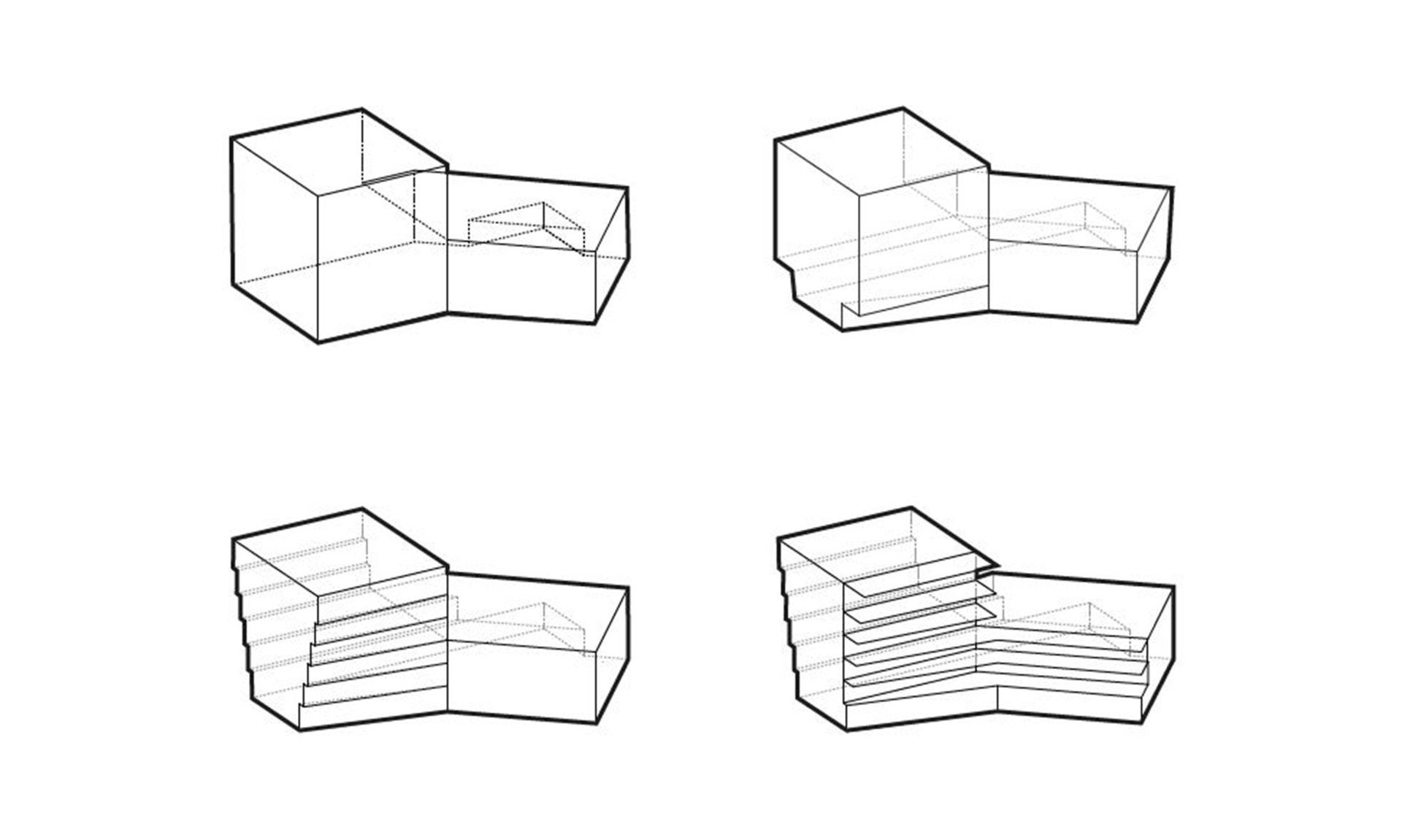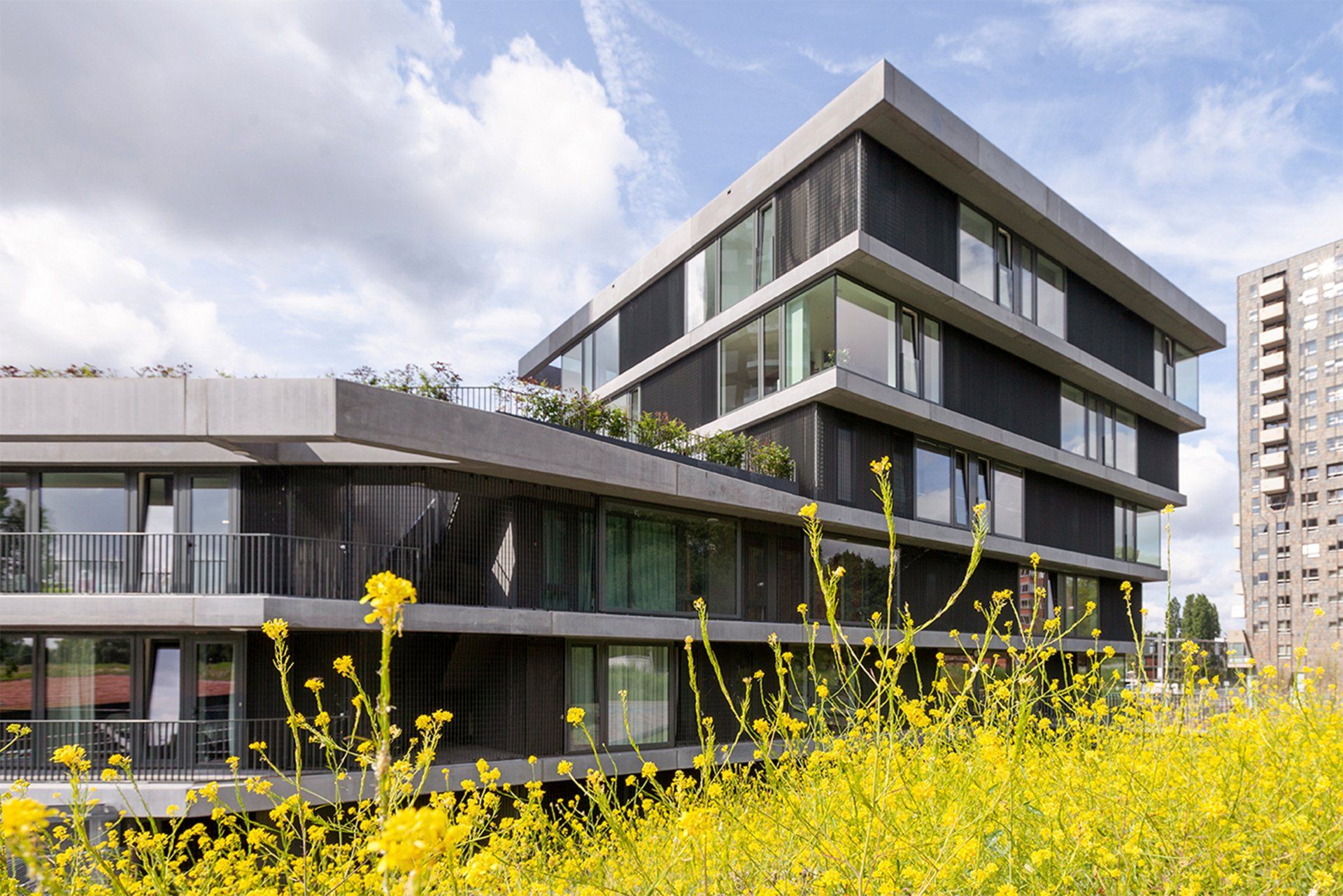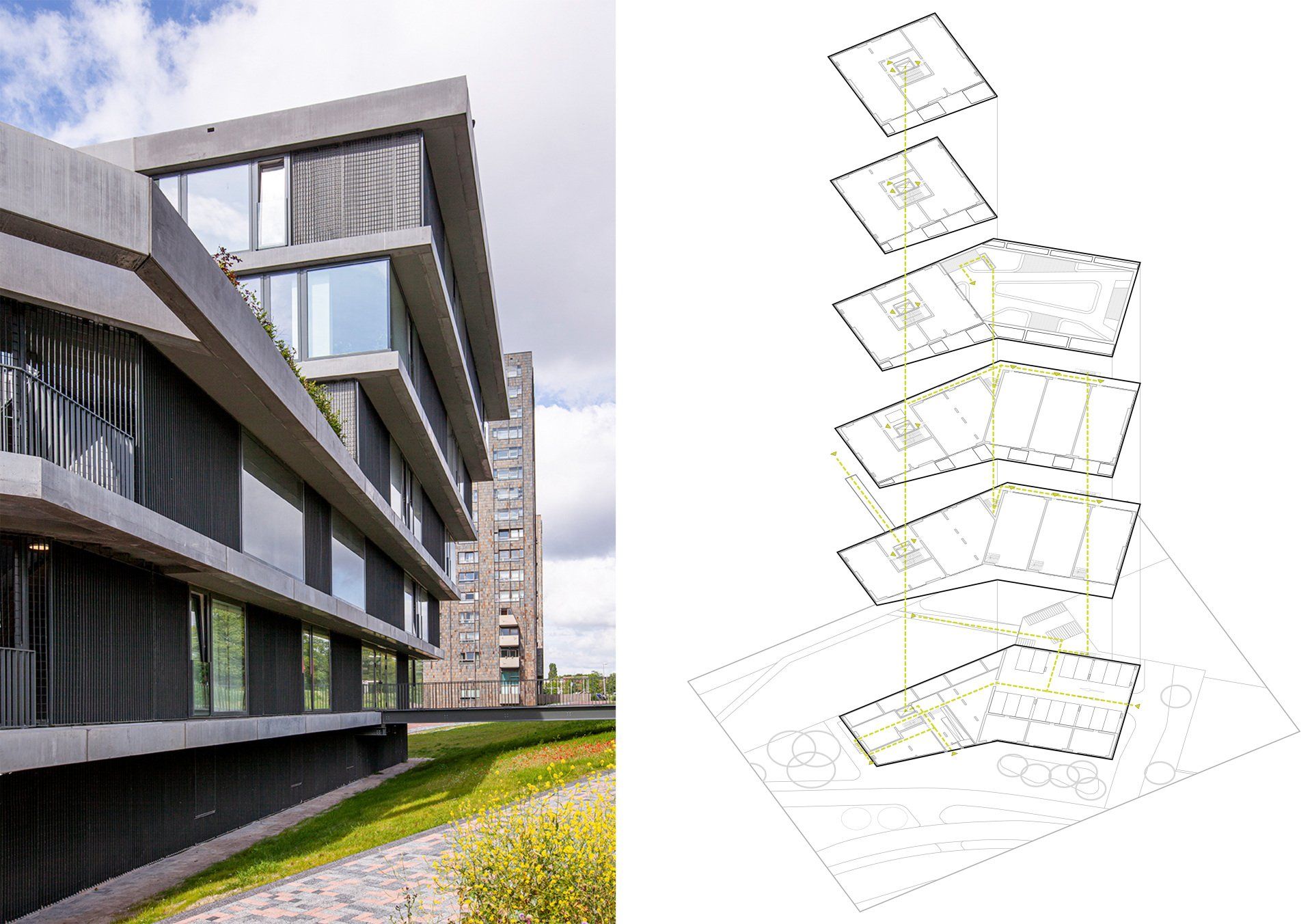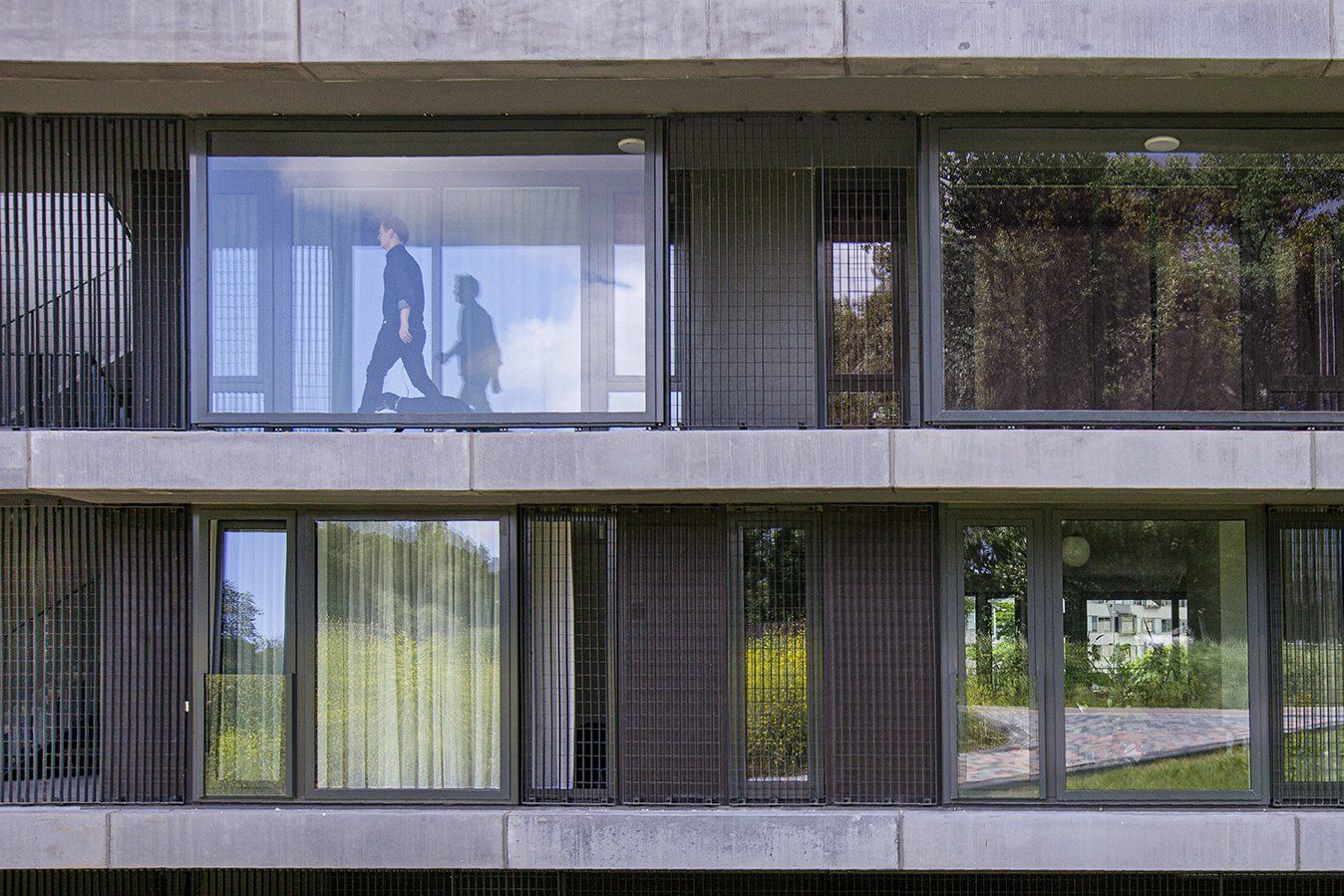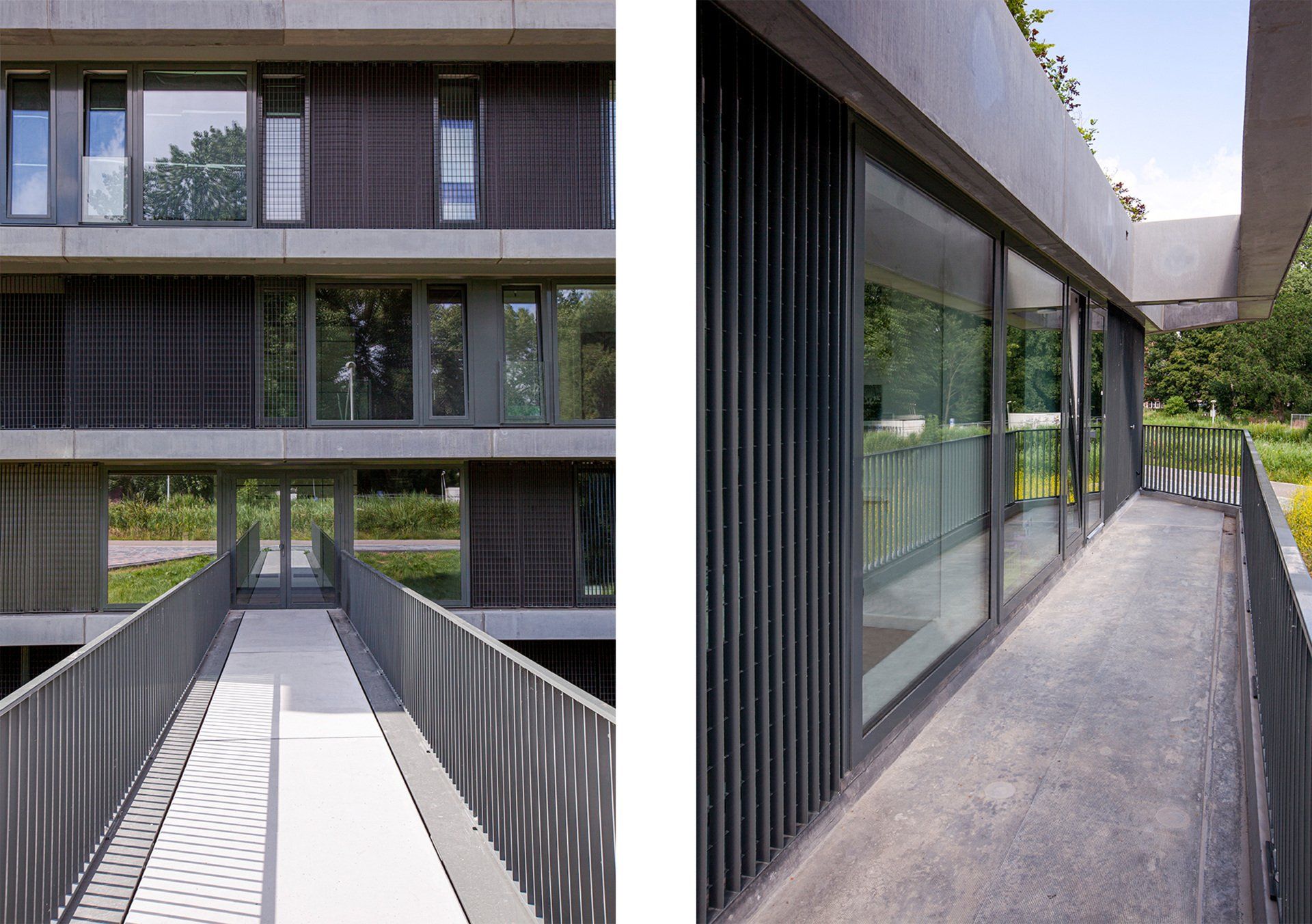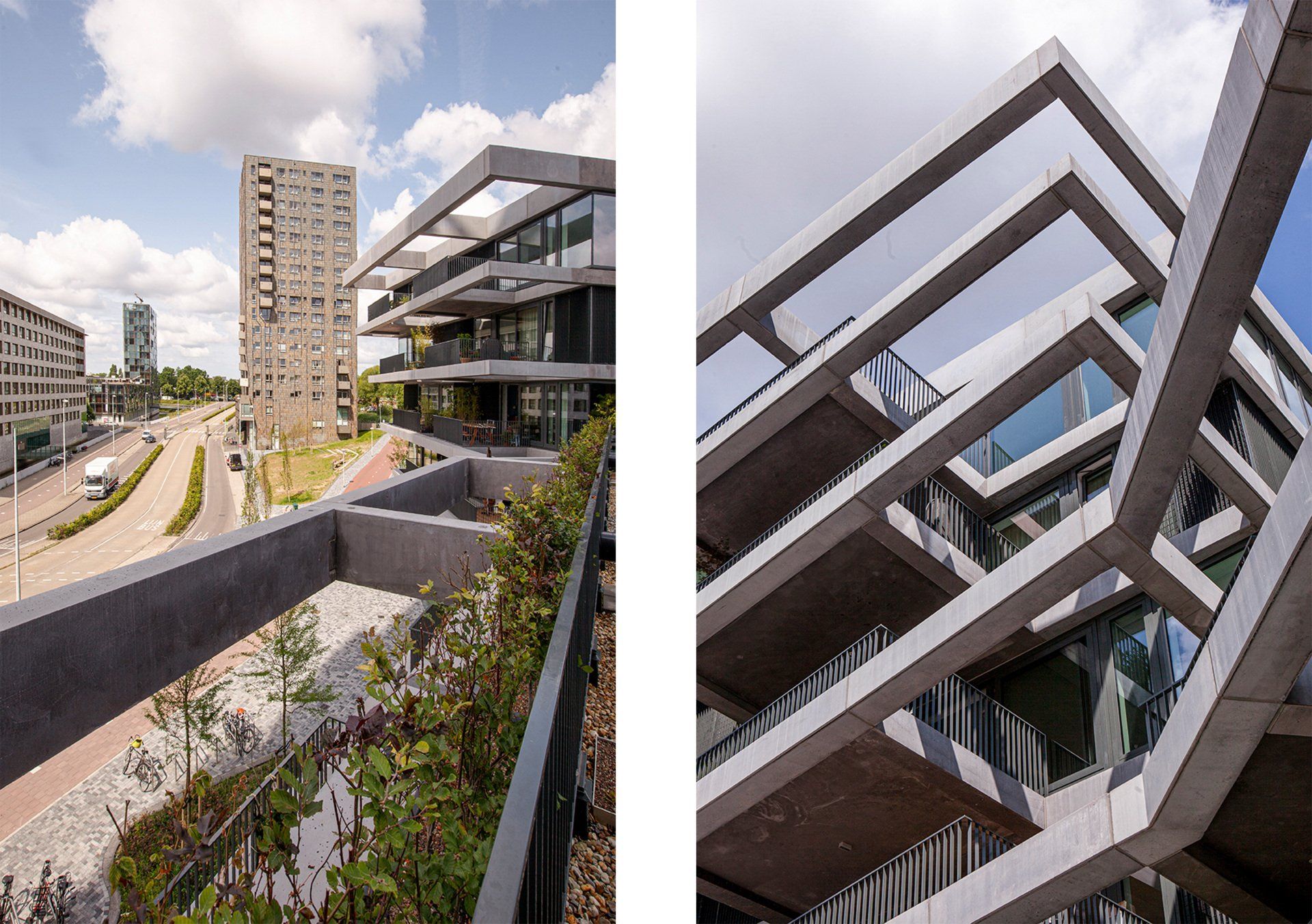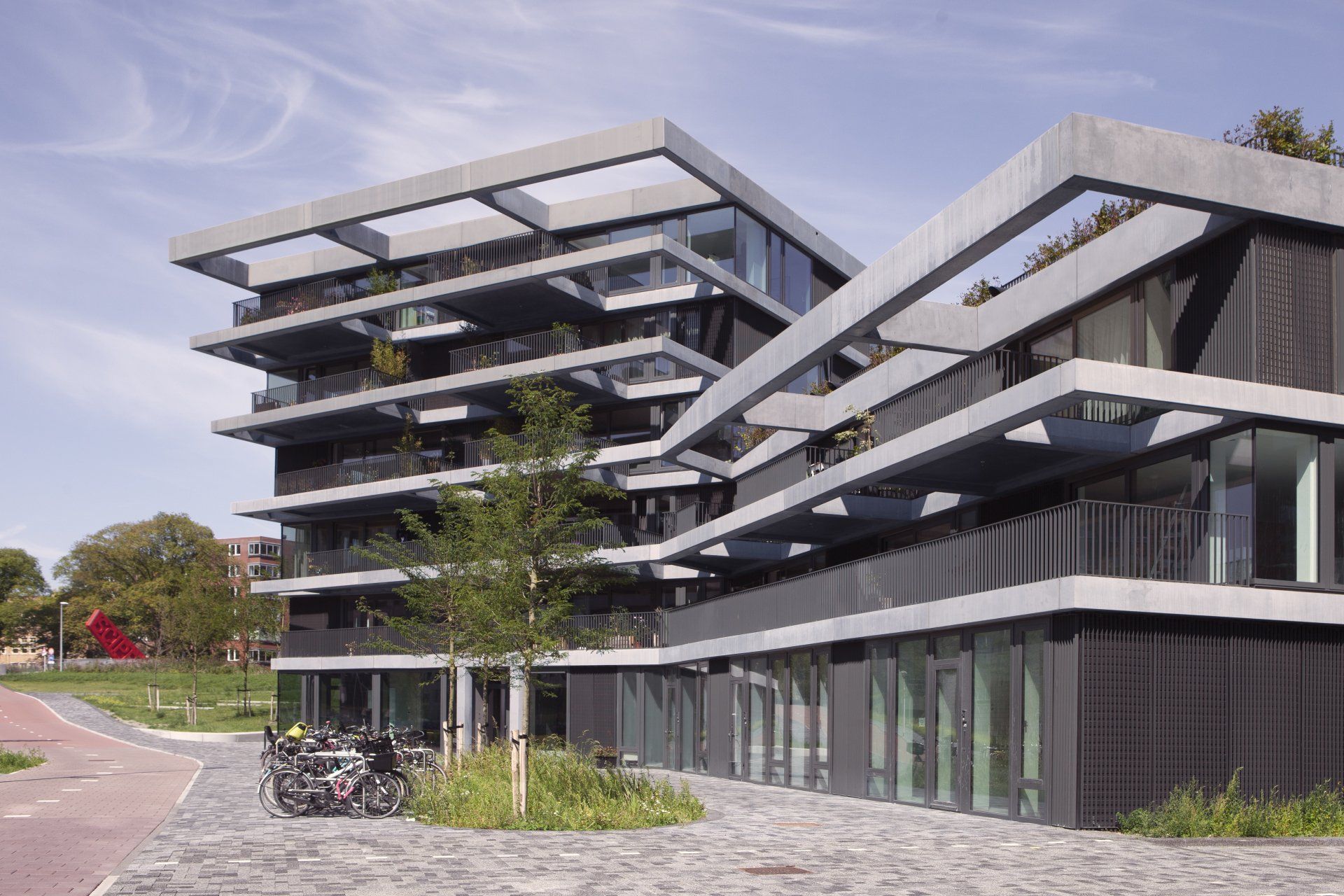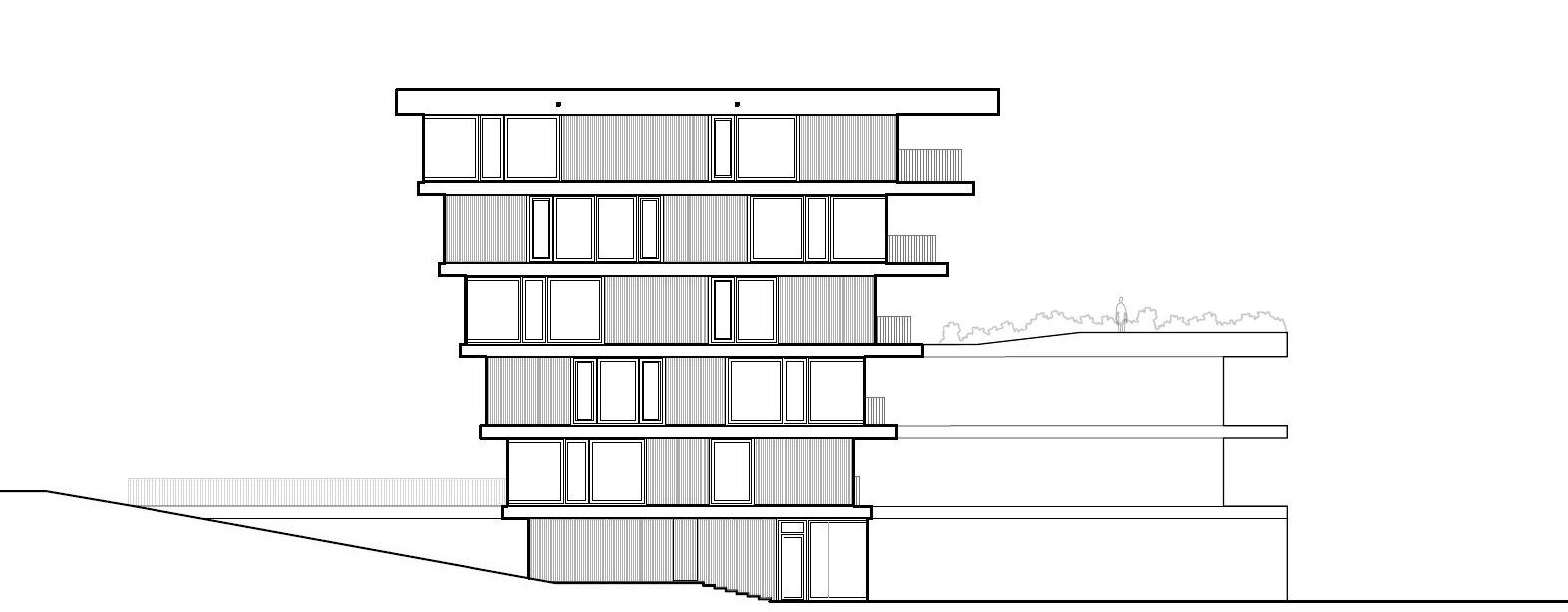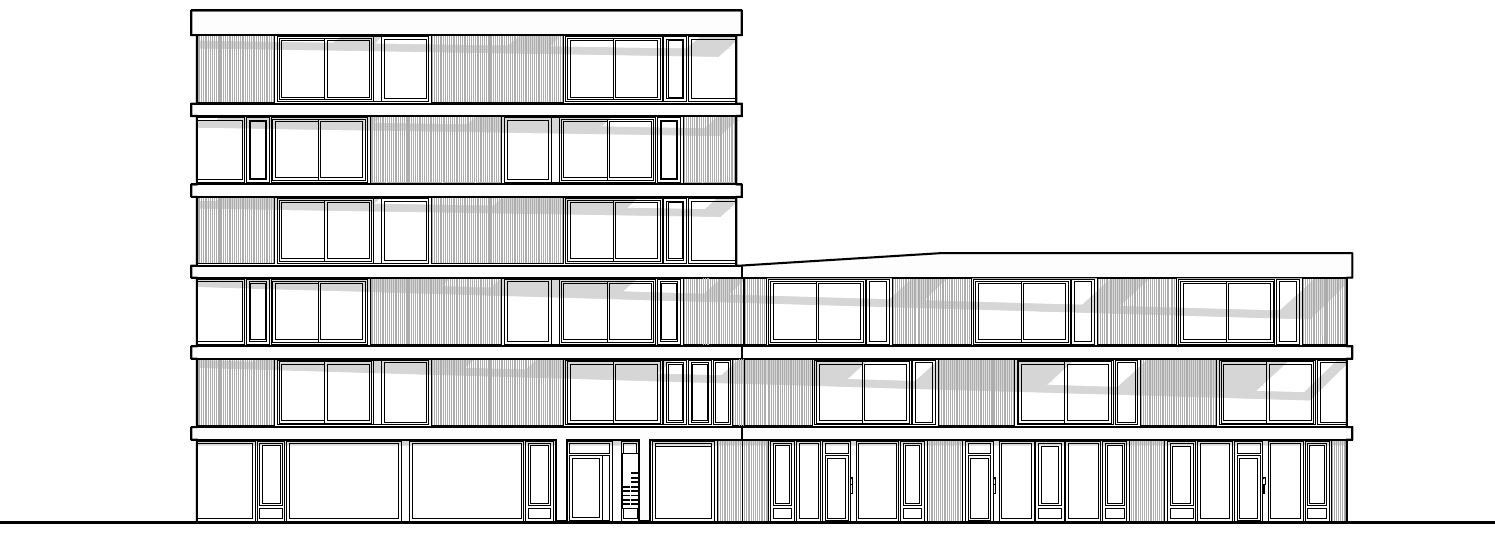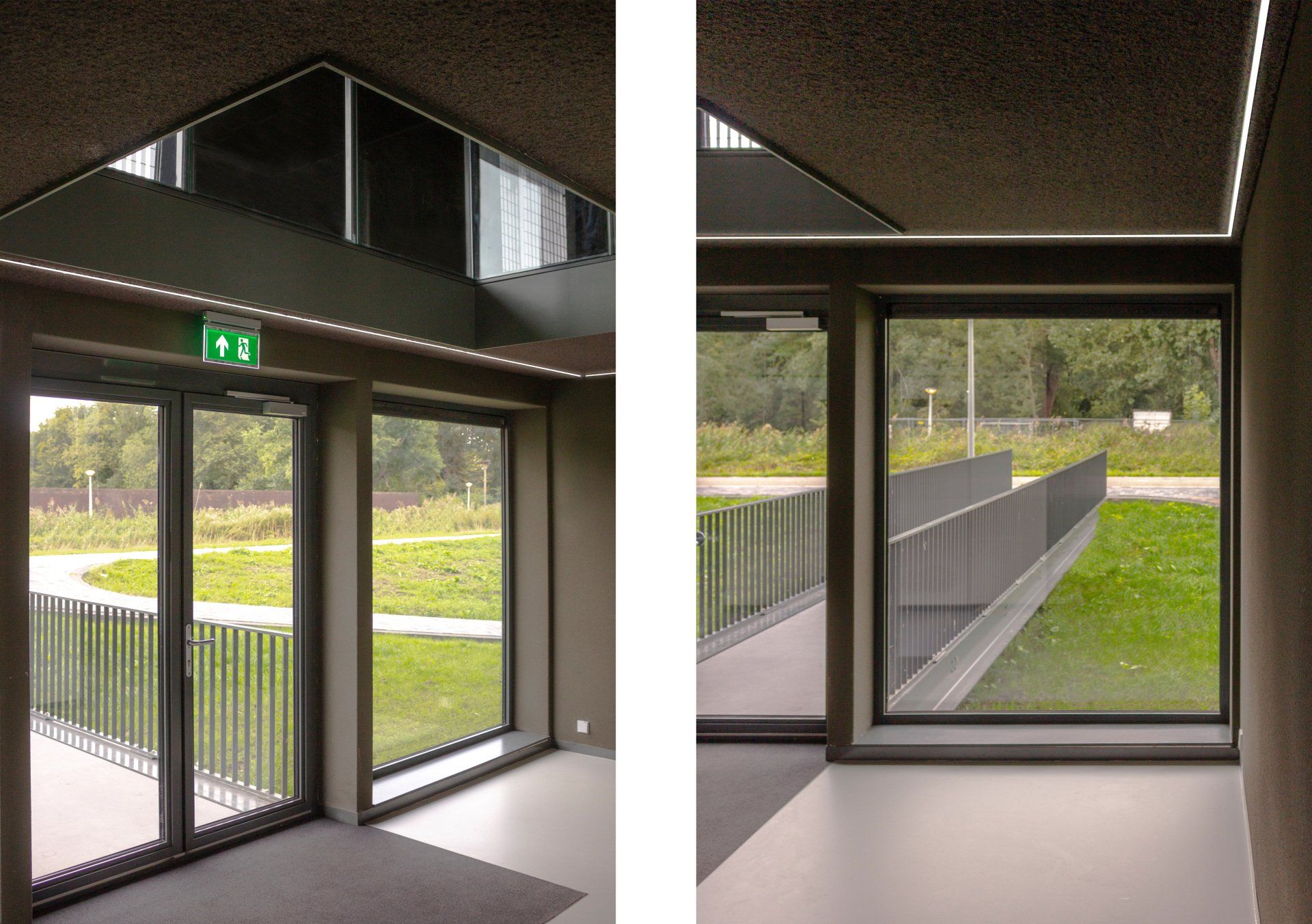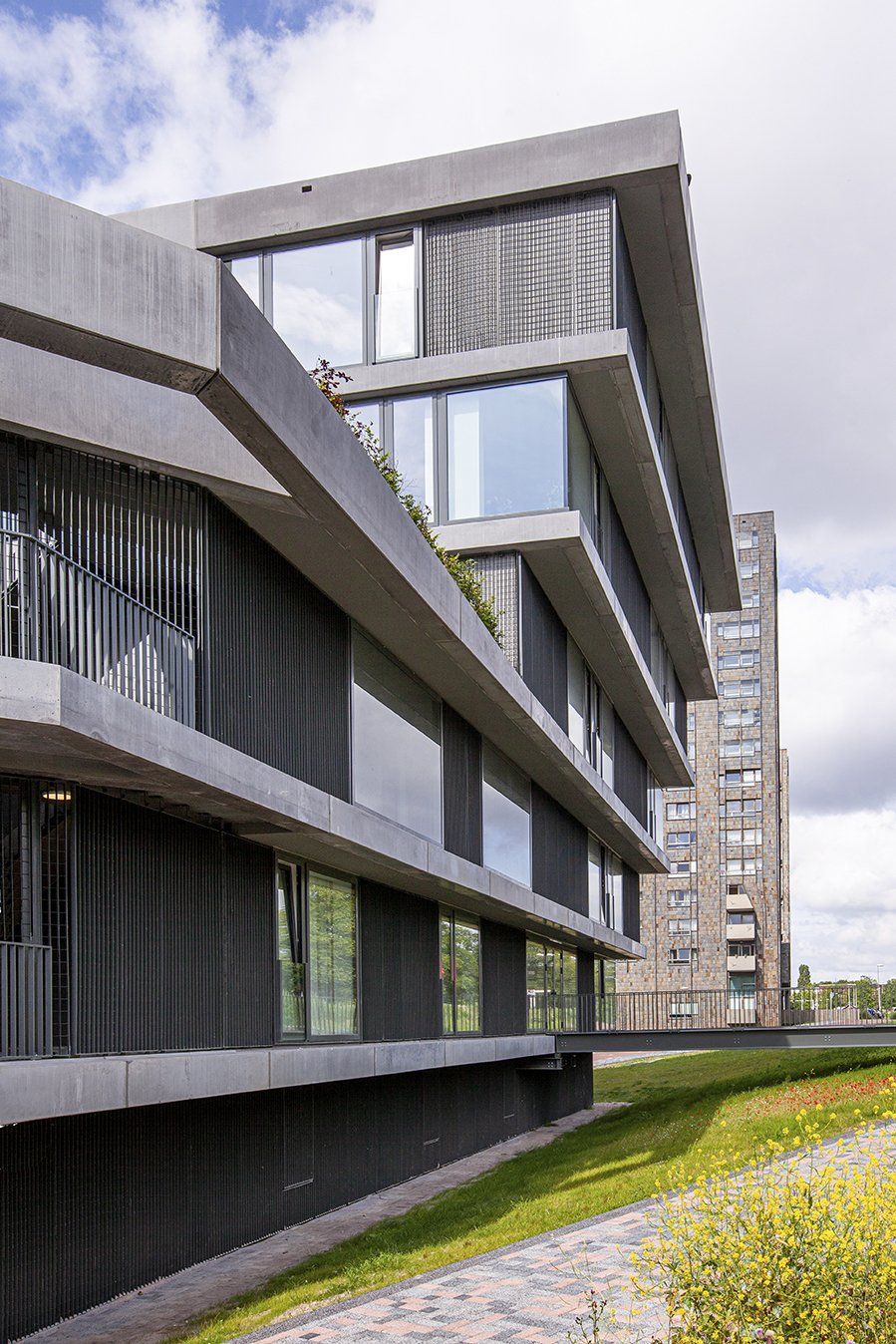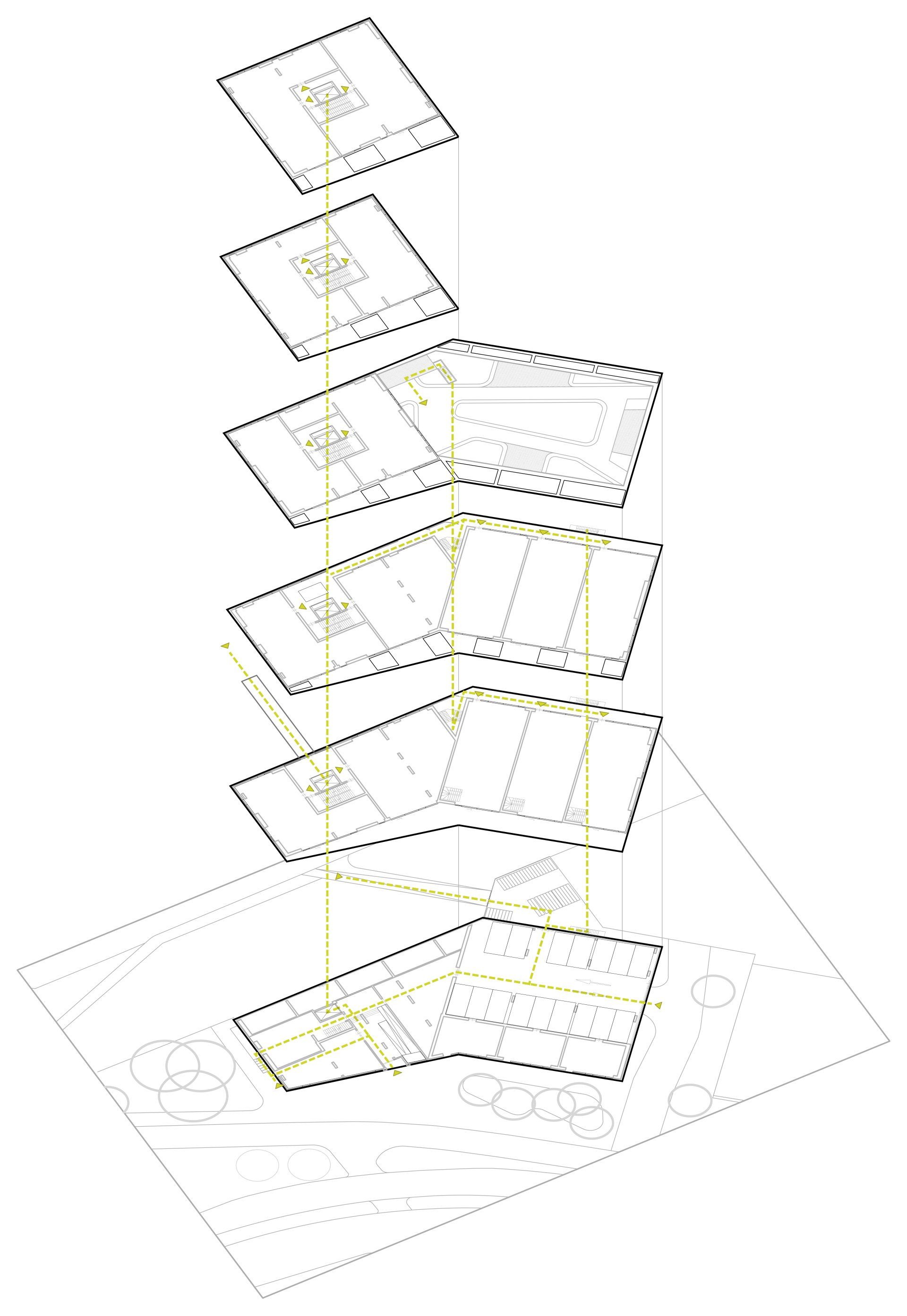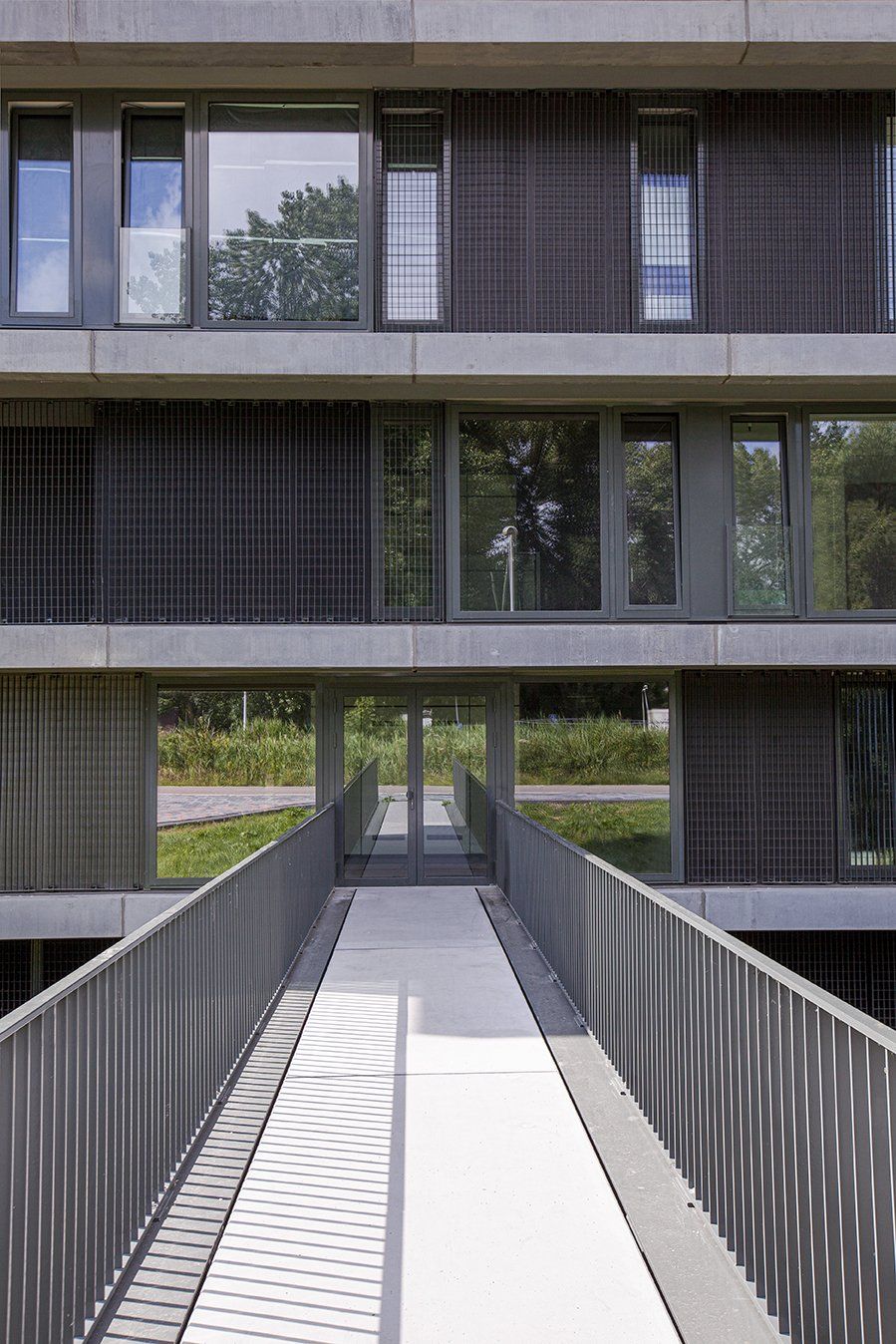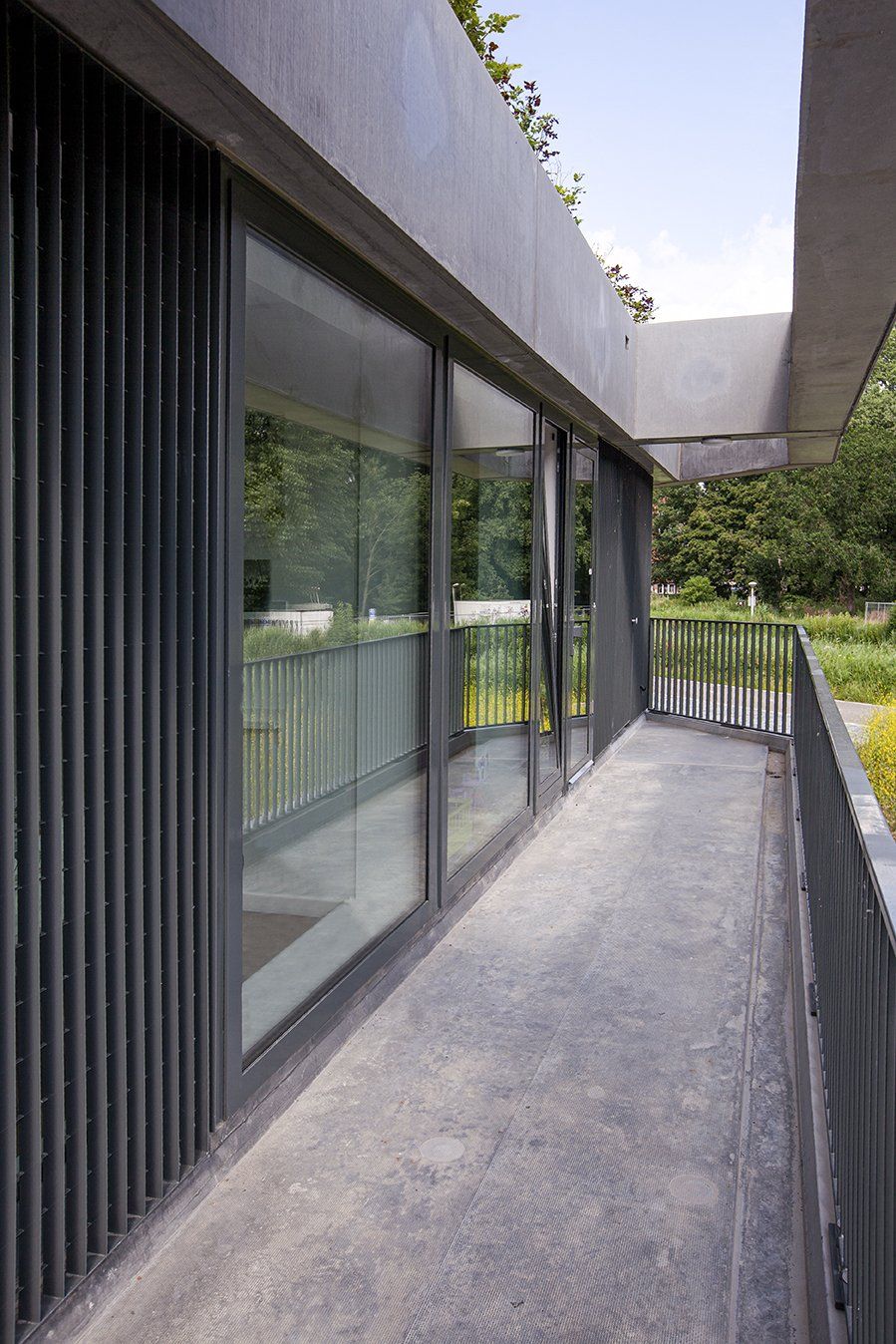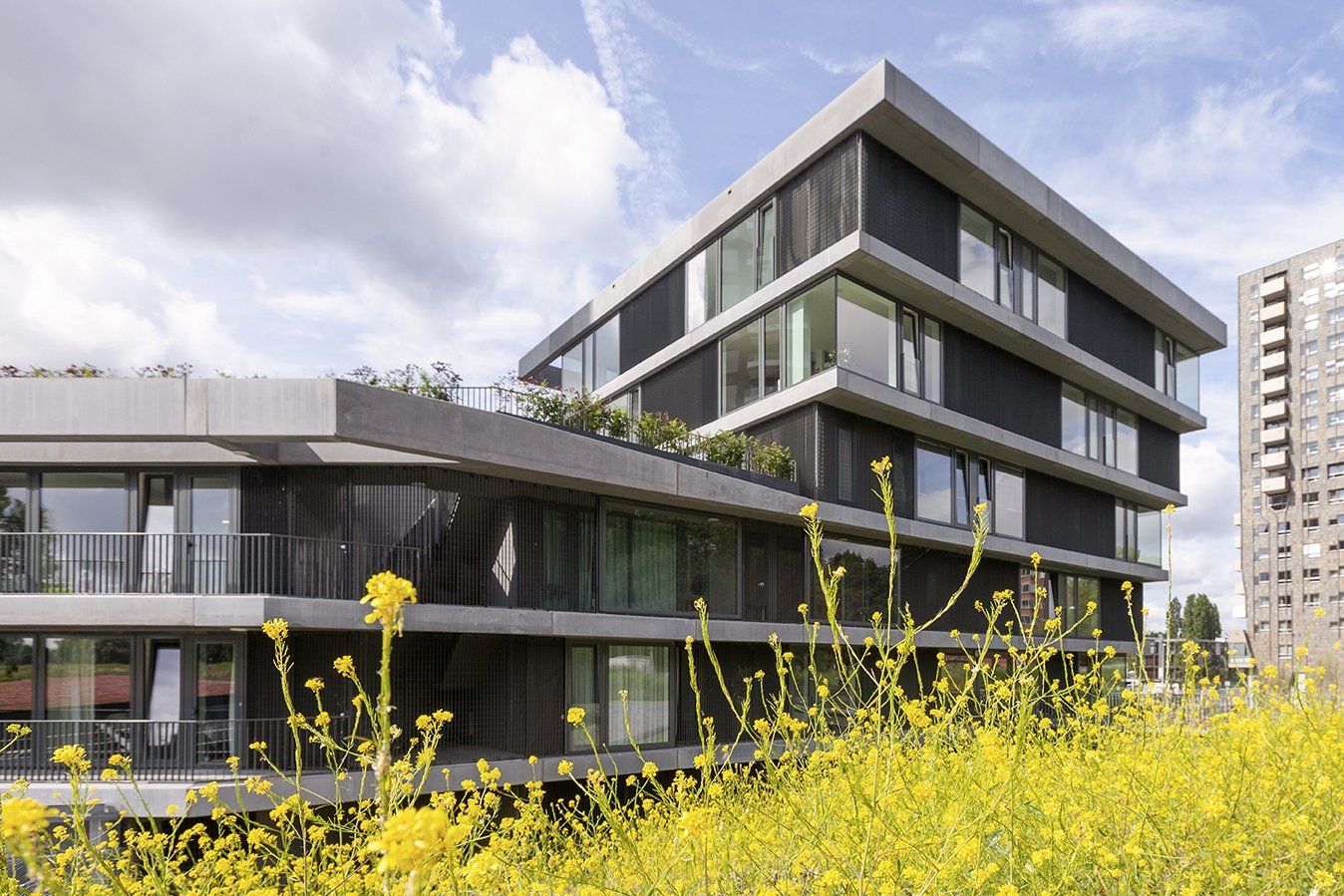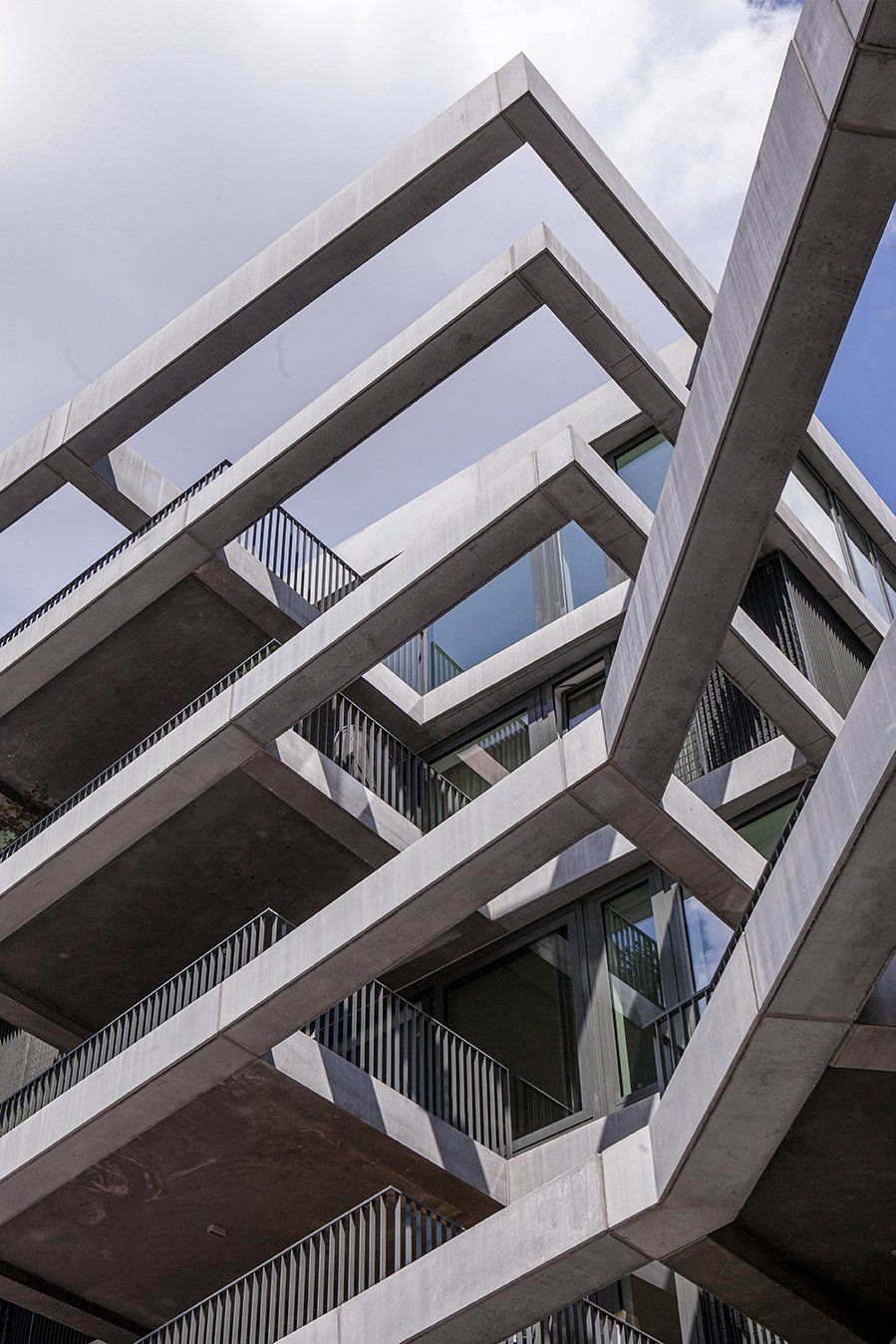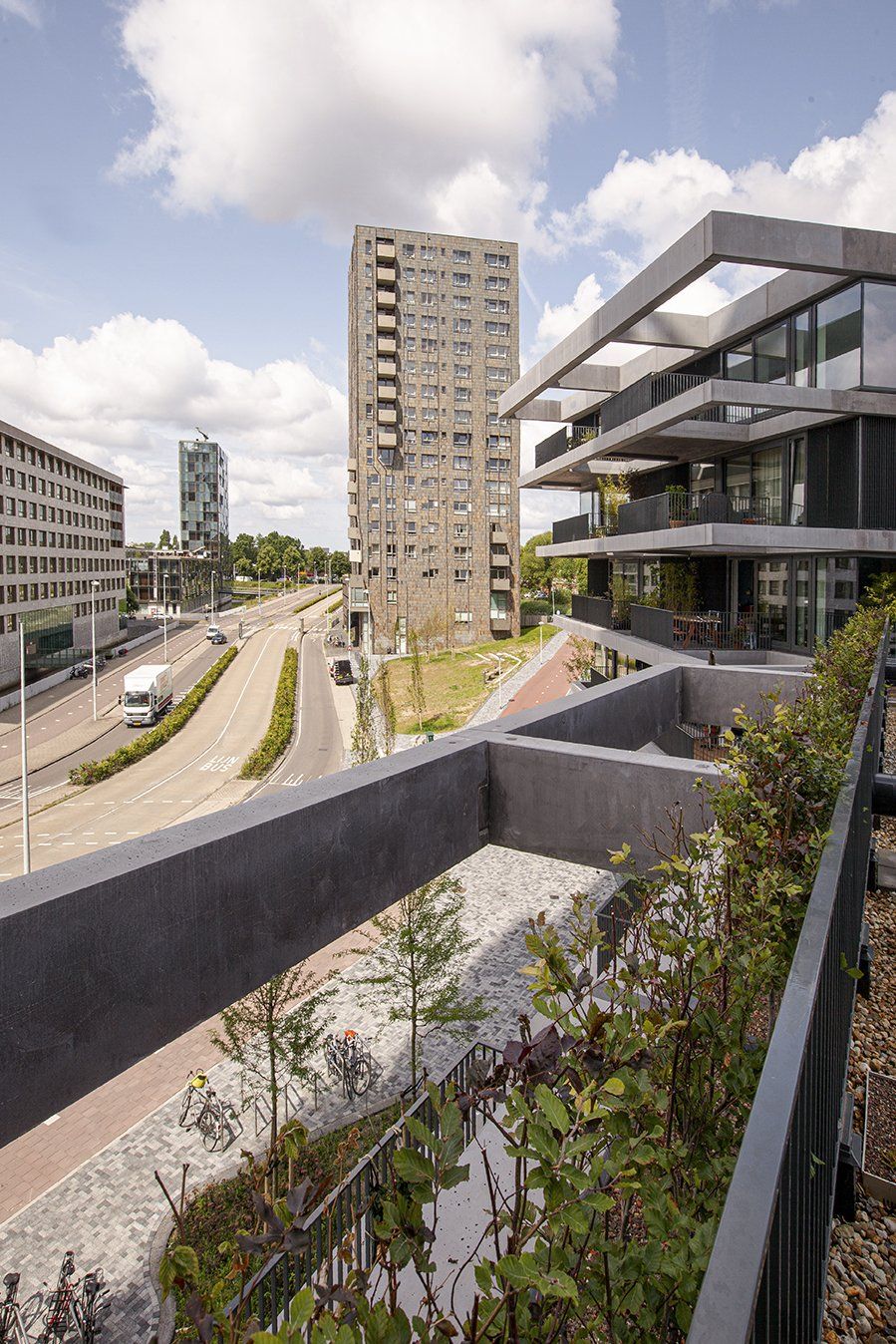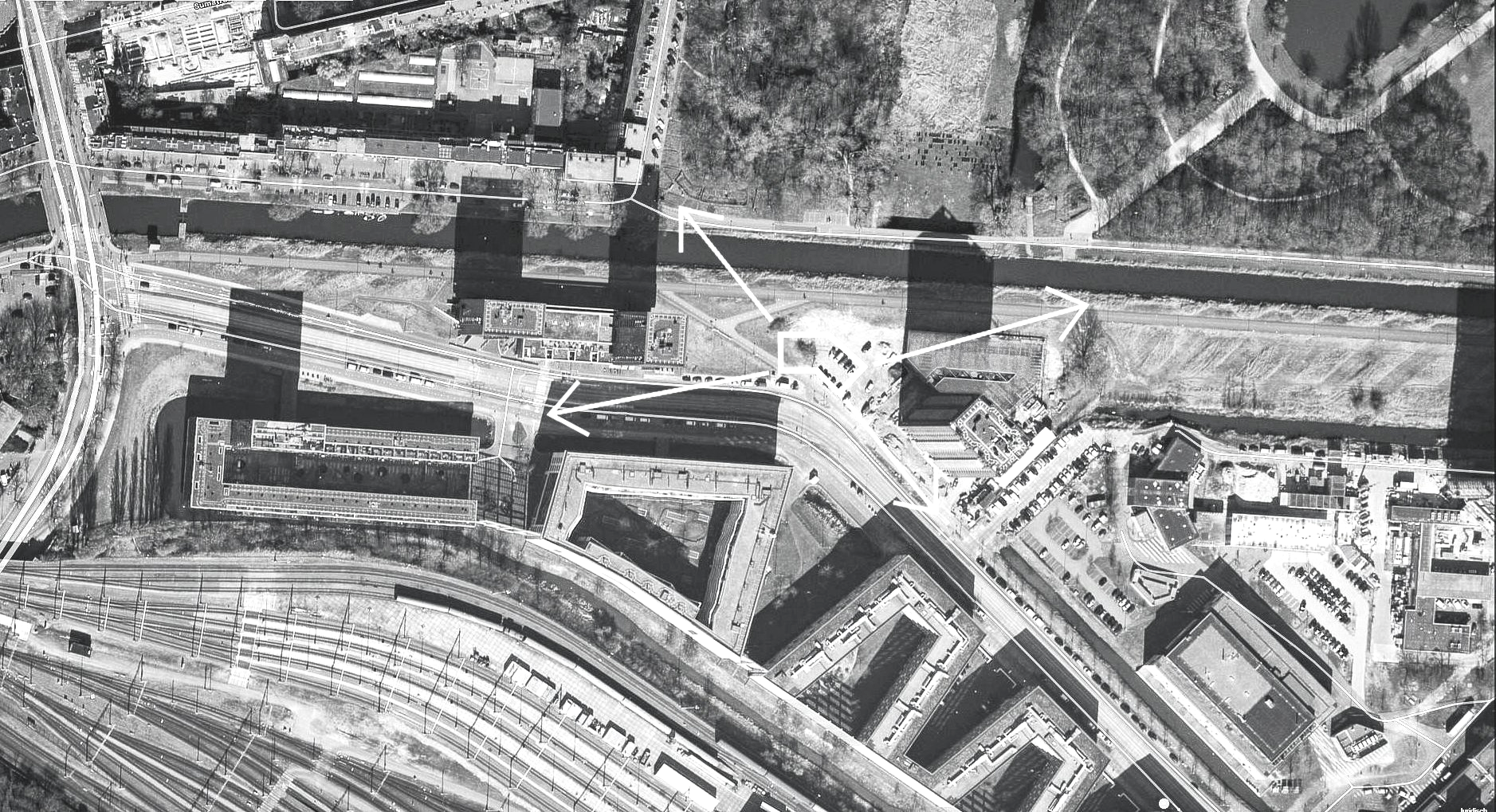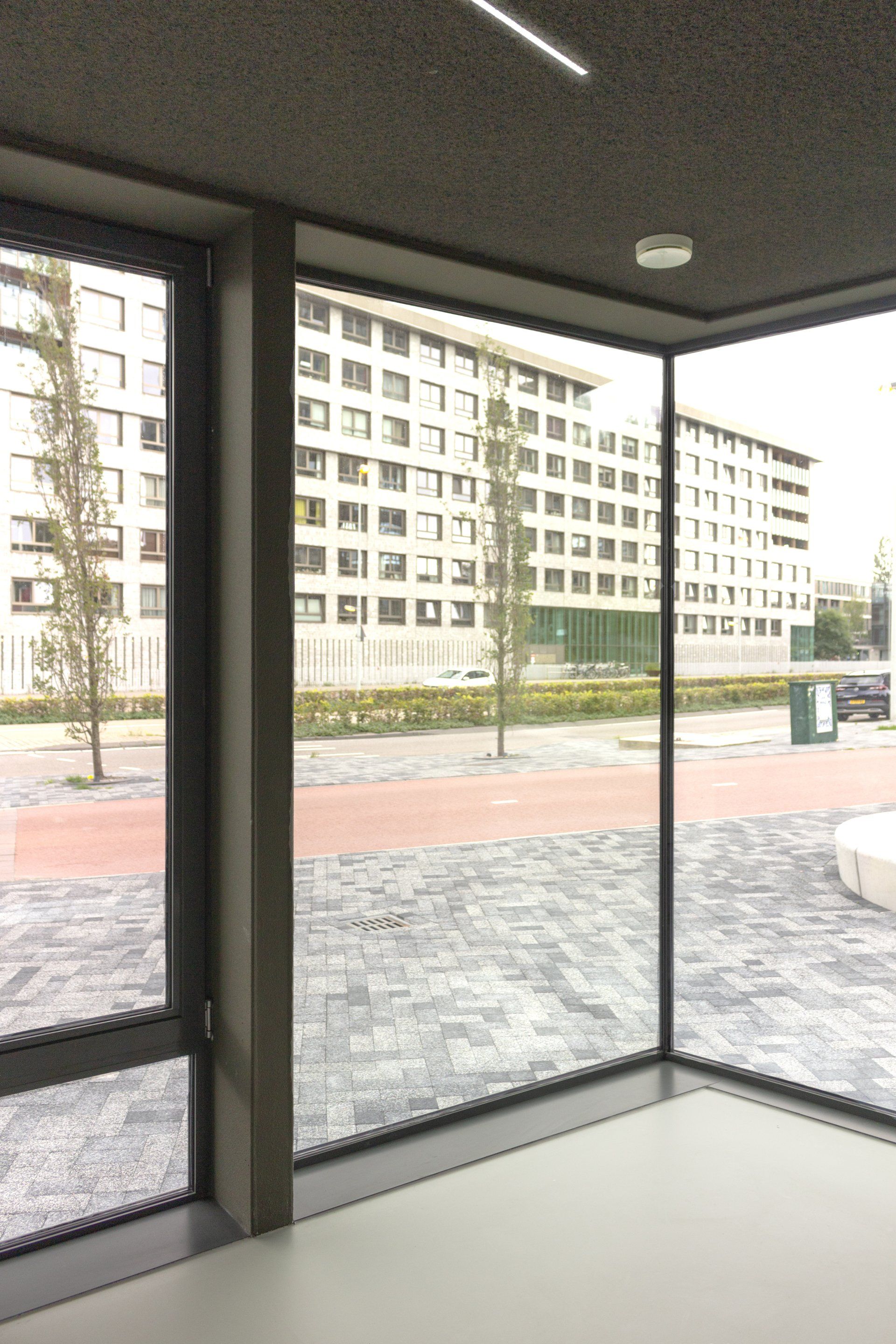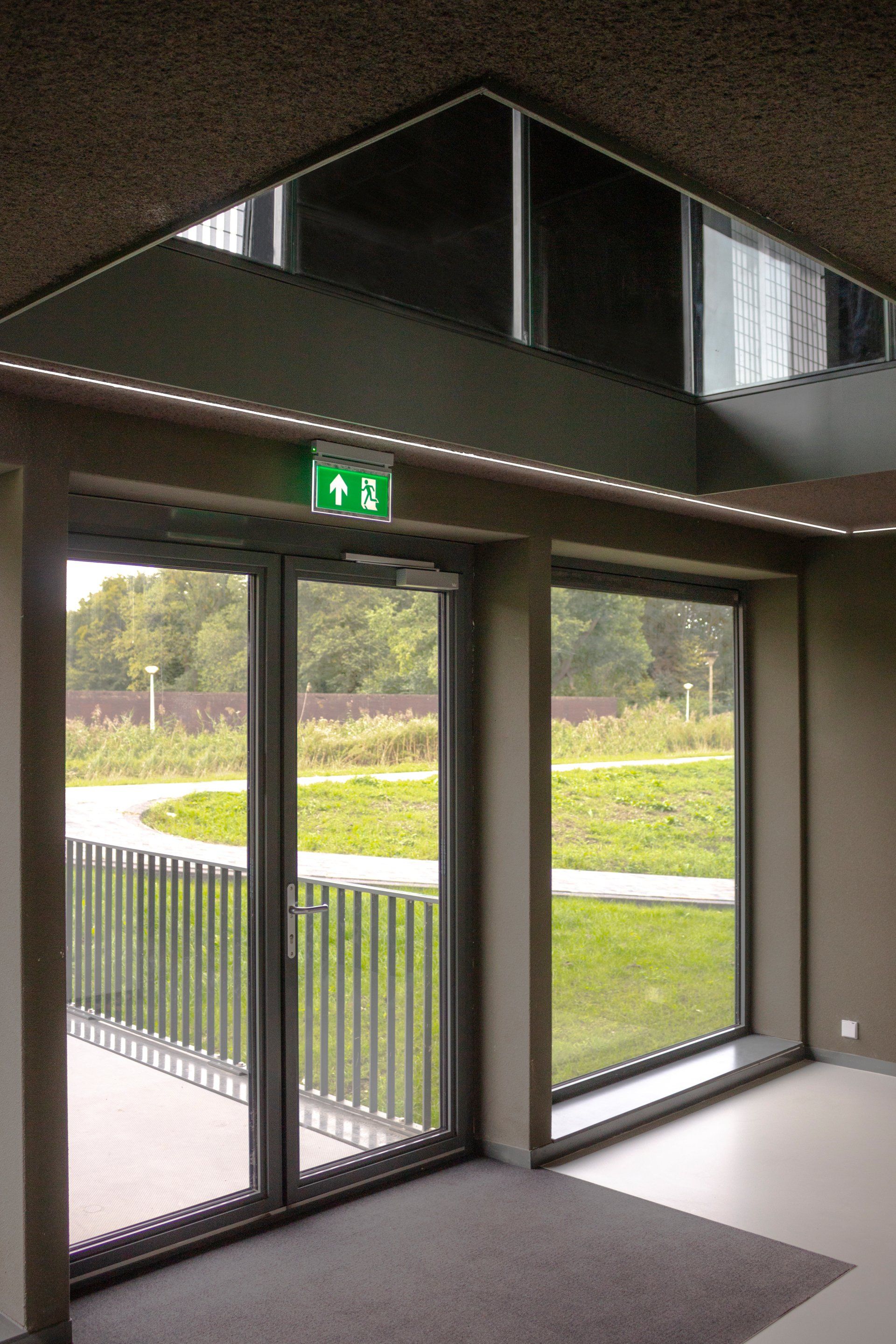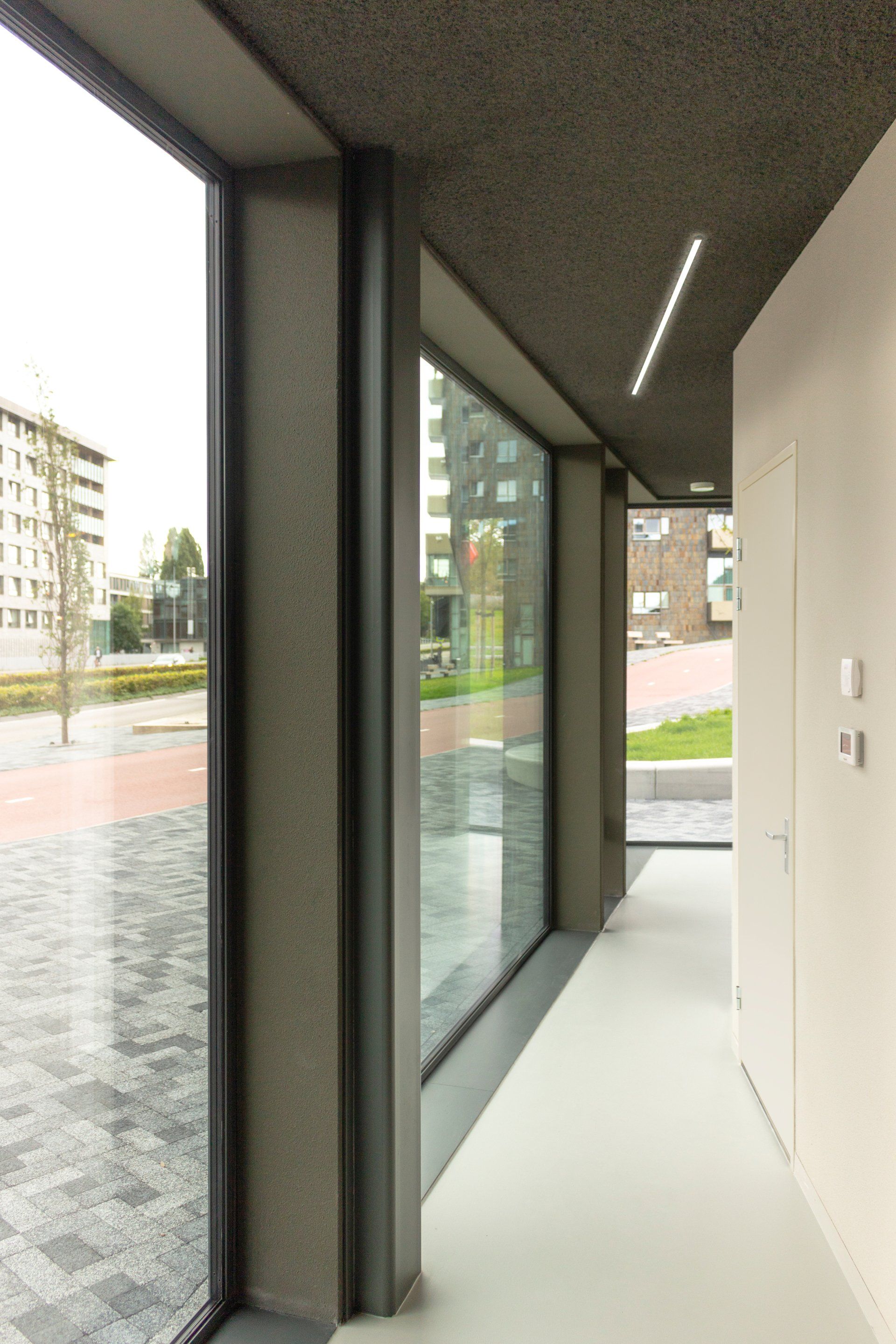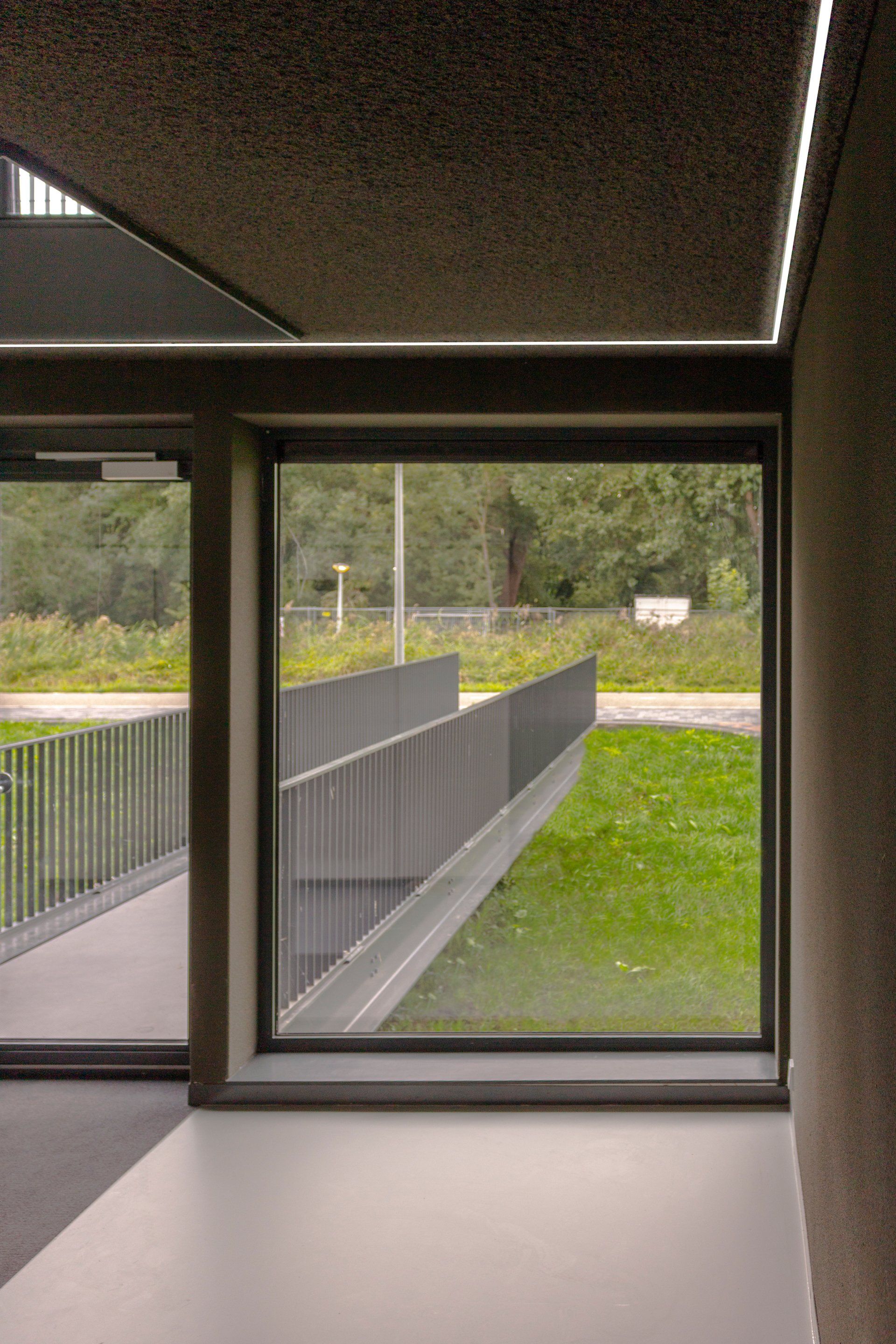CPO SCIENCEPARK
Location: Amsterdam
Programme: 16 apartments, 1 communal space
Status: Completed
Year: 2015 - 2019
Client: CPO Sciencepark Collective
Area: 2840 m2
Team: Jacco van Wengerden, Camille Barbo, Andrew Choptiany, Henry Holmes, Elise Laurent, Xinming Li, Shuyan Lin, Maria Araceli Martinez Llamas, Katy Morilleau, Xichen Sun
Structural Engineer: Pieters Bouwtechniek BV
Building Physics: Nieman Raadgevende Ingenieurs
Contractor: Bot Bouwgroep BV
Photography: Yvonne Brandwijk
-
TEXT
Atelier Van Wengerden won a tender to build 16 apartments With parking and communal spaces on this challenging site in the east Of Amsterdam. Work commenced in 2015 on this sculptural and functional building, which acts as an arresting contrast to Other buildings in the Science Park neighbourhood.
The site is particularly challenging due to a number of factors. In particular, it is located on a dyke and therefore subject to numerous restrictions enforced by the Water Board. Furthermore, it adjoins an access road onto Amsterdam's main ring road with its consequent noise, and it is surrounded by a number of much higher buildings, which has implications in terms of light. Finally, there was a demand that the building should be as sustainable and energy efficient as possible.
For a number of reasons, it was decided that a cantilever structure represented the most elegant and appropriate solution. This was largely determined by the fact that the dyke is a protected zone on which no building is permitted. Moreover, the cantilever creates an outdoor space to the street side that affords a generous entry to the building, a requirement stipulated in the development-plan. As this inevitably resulted in completely shaded lower levels, a gradually increasing overhang to both sides was introduced.
The apartments themselves wrap around a central tower, with most apartments enjoying views on three sides. A bridge from the first floor links to a cycle path on the dyke, which in turn links the building to a bridge over the canal to the rapidly gentrifying Indischebuurt.
A sun study revealed that despite the surrounding tower blocks, the south side of the building receives a lot of sun, making balconies a viable proposition for all apartments. The balconies are unusually deep, with perforations enabling maximum light to reach the lower floors, and the underside of the balconies feature sound absorbent materials to limit traffic noise.
The Active House Method has been applied. Thus energy use is maximized via methods such as PV panels and a green roof. while generous sunlight and ventilation promotes the health of residents. Meanwhile, the ground floor work and communal spaces promote interaction and neighbourhood events.
Location: Amsterdam
Programme: 16 apartments, 1 communal space
Status: Completed
Year: 2015 - 2019
Client: CPO Sciencepark Collective
Area: 2840 m2
Team: Jacco van Wengerden, Camille Barbo, Andrew Choptiany,
Henry Holmes, Elise Laurent, Xinming Li, Shuyan Lin,
Maria Araceli Martinez Llamas, Katy Morilleau, Xichen Sun
Structural Engineer: Pieters Bouwtechniek BV
Building Physics: Nieman Raadgevende Ingenieurs
Contractor: Bot Bouwgroep BV
Photography: Yvonne Brandwijk
Atelier Van Wengerden won a tender to build 16 apartments With parking and communal spaces on this challenging site in the east Of Amsterdam. Work commenced in 2015 on this sculptural and functional building, which acts as an arresting contrast to Other buildings in the Science Park neighbourhood.
The site is particularly challenging due to a number of factors. In particular, it is located on a dyke and therefore subject to numerous restrictions enforced by the Water Board. Furthermore, it adjoins an access road onto Amsterdam's main ring road with its consequent noise, and it is surrounded by a number of much higher buildings, which has implications in terms of light. Finally, there was a demand that the building should be as sustainable and energy efficient as possible.
For a number of reasons, it was decided that a cantilever structure represented the most elegant and appropriate solution. This was largely determined by the fact that the dyke is a protected zone on which no building is permitted. Moreover, the cantilever creates an outdoor space to the street side that affords a generous entry to the building, a requirement stipulated in the development-plan.
As this inevitably resulted in completely shaded lower levels, a gradually increasing overhang to both sides was introduced.
The apartments themselves wrap around a central tower, with most apartments enjoying views on three sides.
A bridge from the first floor links to a cycle path on the dyke, which in turn links the building to a bridge over the canal to the rapidly gentrifying Indischebuurt.
A sun study revealed that despite the surrounding tower blocks, the south side of the building receives a lot of sun, making balconies a viable proposition for all apartments. The balconies are unusually deep, with perforations enabling maximum light to reach the lower floors, and the underside of the balconies feature sound absorbent materials to limit traffic noise.
The Active House Method has been applied. Thus energy use is maximized via methods such as PV panels and a green roof. while generous sunlight and ventilation promotes the health of residents. Meanwhile, the ground floor work and communal spaces promote interaction and neighbourhood events.
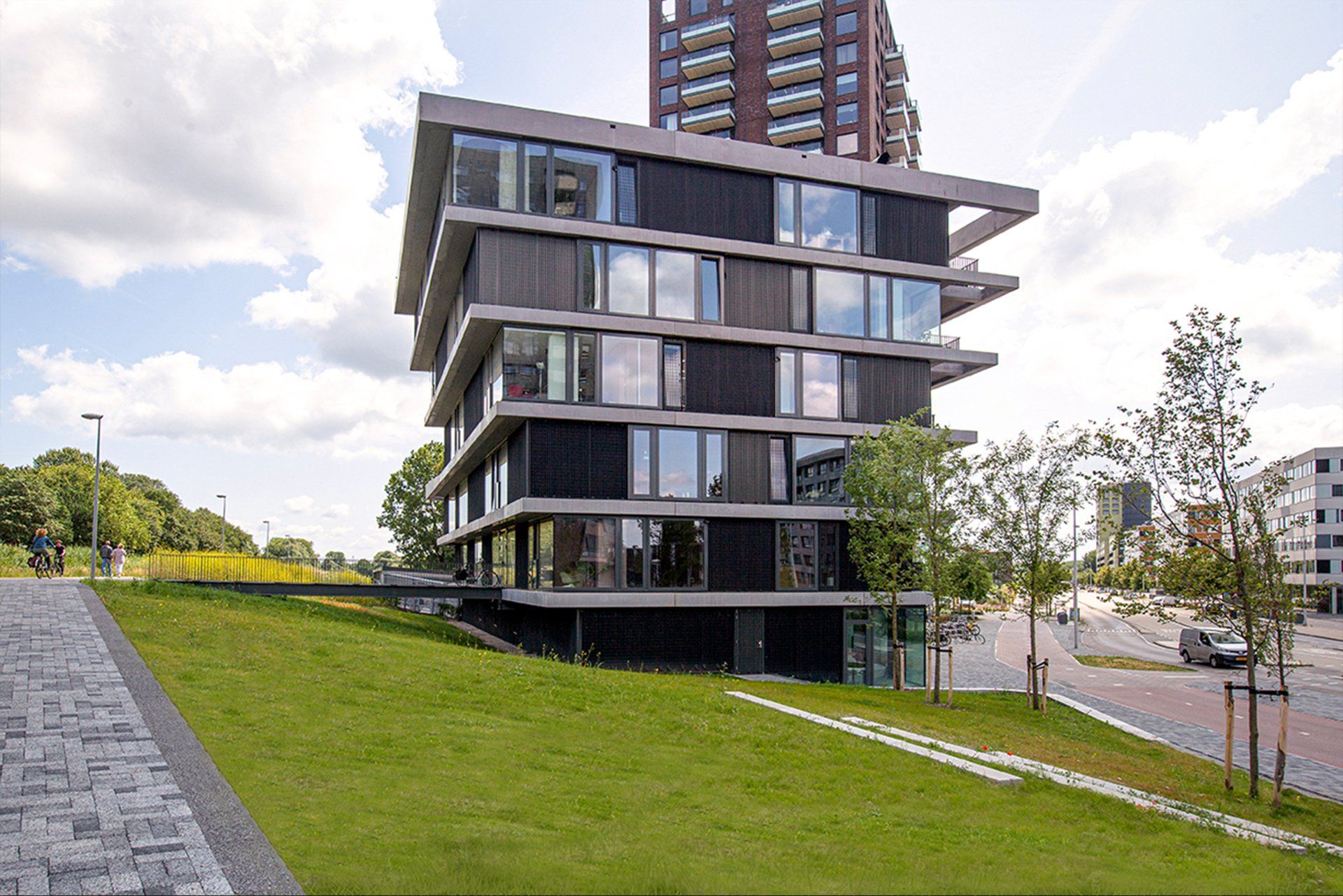

Location: Amsterdam
Programme: 16 apartments, 1 communal space
Status: Completed
Year: 2015 - 2019
Client: CPO Sciencepark Collective
Area: 2840 m2
Team: Jacco van Wengerden, Camille Barbo, Andrew Choptiany,
Henry Holmes, Elise Laurent, Xinming Li, Shuyan Lin,
Maria Araceli Martinez Llamas, Katy Morilleau, Xichen Sun
Structural Engineer: Pieters Bouwtechniek BV
Building Physics: Nieman Raadgevende Ingenieurs
Contractor: Bot Bouwgroep BV
Photography: Yvonne Brandwijk
Atelier Van Wengerden won a tender to build 16 apartments With parking and communal spaces on this challenging site in the east Of Amsterdam. Work commenced in 2015 on this sculptural and functional building, which acts as an arresting contrast to Other buildings in the Science Park neighbourhood.
The site is particularly challenging due to a number of factors. In particular, it is located on a dyke and therefore subject to numerous restrictions enforced by the Water Board. Furthermore, it adjoins an access road onto Amsterdam's main ring road with its consequent noise, and it is surrounded by a number of much higher buildings, which has implications in terms of light. Finally, there was a demand that the building should be as sustainable and energy efficient as possible.
For a number of reasons, it was decided that a cantilever structure represented the most elegant and appropriate solution. This was largely determined by the fact that the dyke is a protected zone on which no building is permitted. Moreover, the cantilever creates an outdoor space to the street side that affords a generous entry to the building, a requirement stipulated
in the development-plan. As this inevitably resulted in completely shaded lower levels, a gradually increasing overhang to both sides was introduced.
The apartments themselves wrap around a central tower, with most apartments enjoying views on three sides. A bridge from the first floor links to a cycle path on the dyke, which in turn links the building to a bridge over the canal to the rapidly gentrifying Indischebuurt.
A sun study revealed that despite the surrounding tower blocks, the south side of the building receives a lot of sun, making balconies a viable proposition for all apartments. The balconies are unusually deep, with perforations enabling maximum light to reach the lower floors, and the underside of the balconies feature sound absorbent materials to limit traffic noise.
The Active House Method has been applied. Thus energy use is maximized via methods such as PV panels and a green roof. while generous sunlight and ventilation promotes the health of residents. Meanwhile, the ground floor work and communal spaces promote interaction and neighbourhood events.


